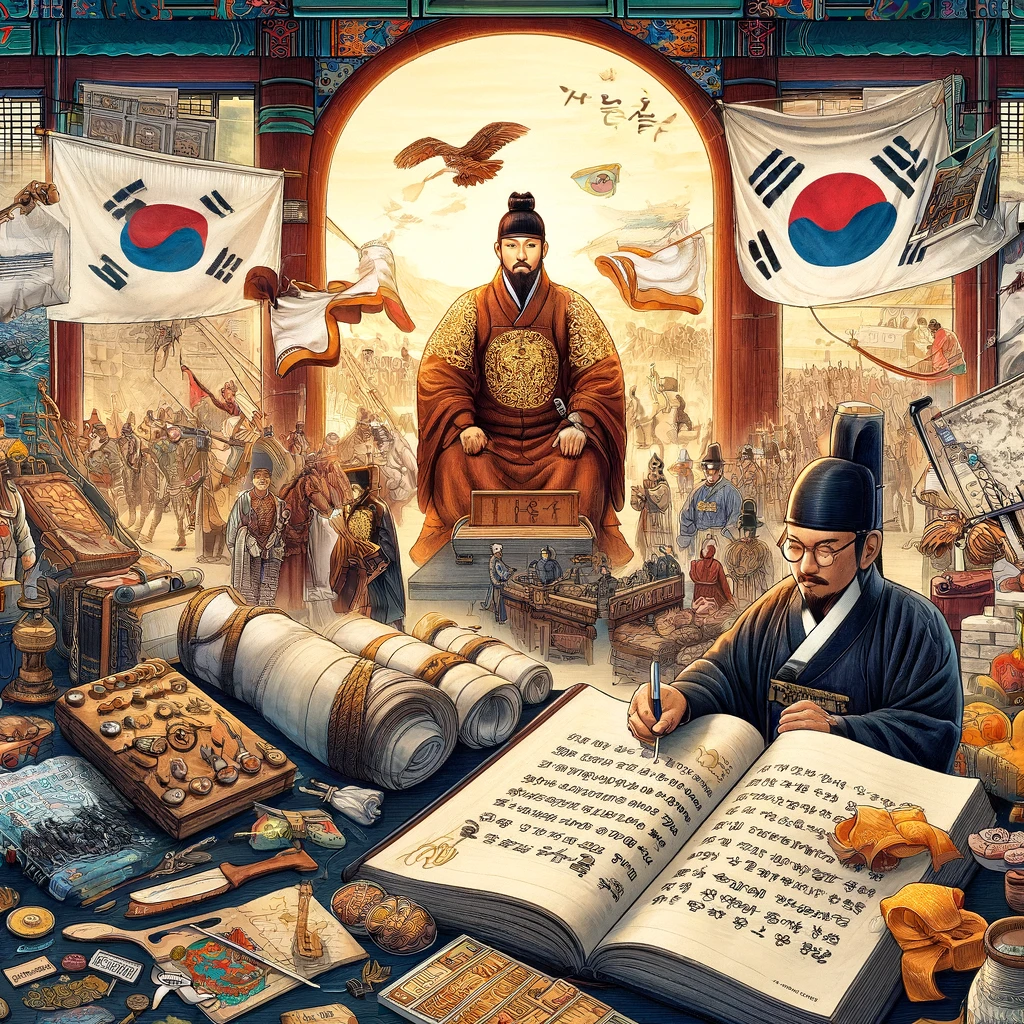목차
The History of Hangul
The history of Hangul, the native alphabet of the Korean language, is a remarkable testament to linguistic innovation, cultural pride, and the visionary leadership of its creator, King Sejong the Great. Hangul’s development in the 15th century marked a significant departure from the aristocratic monopoly on literacy and learning, offering a more accessible means of reading and writing to the common people of Korea. This discussion explores the creation of Hangul, its historical context, and its profound significance in promoting literacy and cultural identity.

The Prelude to Hangul
Before Hangul’s creation, Koreans primarily used Classical Chinese for written communication, a system that was both complex and ill-suited to the Korean spoken language. This reliance on Chinese characters (Hanja) created a significant barrier to literacy among the general populace, as the intricate characters were difficult to learn and the writing system did not reflect the grammatical structure and sounds of Korean. The literacy was thus largely confined to the yangban (nobility) and Buddhist monks, who had the means and time to study Chinese texts. This situation perpetuated a social divide and kept the power of knowledge within the hands of a select few.
The Vision of King Sejong the Great
King Sejong the Great (1397–1450), the fourth king of the Joseon Dynasty, recognized the limitations that the use of Chinese characters imposed on his people. He was a benevolent ruler, deeply concerned with the welfare and education of his subjects. Sejong aimed to create a new script that was logical, easy to learn, and capable of expressing the Korean language more accurately than Chinese characters could. His vision was radical: to democratize literacy and learning, making it possible for every Korean, regardless of social status, to read and write.
The Creation of Hangul
In 1443, after years of research and development by a team of scholars led by King Sejong himself, Hangul was introduced to the Korean people. Originally named Hunminjeongeum, which means “The Correct Sounds for the Instruction of the People,” Hangul was revolutionary in its simplicity and scientific design. The alphabet consists of 28 letters at its inception (19 consonants and 9 vowels), inspired by the shapes the mouth made when the sounds were produced. This phonetic approach to writing was intuitive, allowing learners to easily match spoken Korean to its written form.
The Resistance to Hangul
Despite its innovative design and potential for widespread literacy, Hangul faced immediate resistance from the yangban, who viewed the new script as a threat to their status and the Confucian order that supported it. They argued that Hangul was too easy and that it undermined the intellectual rigor associated with learning Chinese characters. As a result, Hangul’s use was initially limited, and it coexisted with Hanja for several centuries, often relegated to women and the lower classes, who were generally excluded from Hanja education.
Hangul’s Path to Prominence
The script’s fortunes changed over time, especially during the 20th century, as Korea sought to forge a modern national identity. The Japanese occupation of Korea (1910–1945) attempted to suppress Korean culture and language, but the post-liberation period saw a resurgence in Hangul’s use as a symbol of Korean identity and resistance. The subsequent Korean government’s efforts to eliminate illiteracy and modernize the country further cemented Hangul’s central role in Korean society. Today, Hangul Day, celebrated on October 9th, commemorates its creation and celebrates Korean language and cultural pride.
Hangul’s Significance
The creation of Hangul is a profound demonstration of the power of language to shape society. It facilitated widespread literacy, allowing Koreans access to education and the ability to participate fully in civic life. Hangul is not just a writing system; it is a symbol of Korean independence and identity, embodying the nation’s spirit of innovation and resilience.
Moreover, Hangul’s scientific design has garnered international acclaim for its effectiveness and efficiency as a writing system. Linguists often cite it as one of the most logical and learnable scripts in existence, a testament to King Sejong’s vision and the ingenuity of its creators.
Conclusion
The history of Hangul is a story of enlightenment, resistance, and eventual acceptance, intertwined with Korea’s broader historical trajectory. It underscores the importance of accessible education and the profound impact of language on social structure and identity. King Sejong’s legacy, embodied in the simple yet profound script he commissioned, continues to influence the Korean people, reminding us of the transformative power of empathy, innovation, and foresight in leadership.
Go Blog Home
